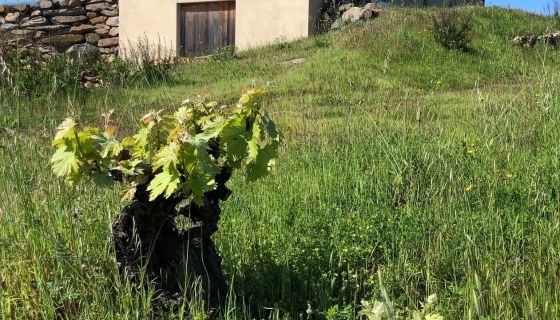You can find inspiration where you least expect it. On a rocky Languedoc hillside vineyard, for example, walking among some very old vines.
I was almost seventy and had just moved, somewhat impulsively, from California to a small winemaking village in southern France where I didn’t know a soul and just barely spoke the language. I was also all alone which, while it seemed brave and adventurous, also made me wonder if, just maybe, I was a little long in the tooth (all still mine) for this type of adventure.
As much as I hated to admit it I was old. By almost every definition —I even Googled ‘Is seventy considered old?' to make sure. Then I Googled again. And again, just in case the definition might have shifted to eighty or ninety. It hadn’t. I was old. Meaning confused and doddering like the old geezers in movies with nothing to do but hang out in the departure lounge waiting for their heavenly flights to be called.
In The Fountain of Age, Betty Friedan writes that ageing is acceptable only if it passes for youth. Taking this to heart, I'd slap on anti-ageing cremes and lie about my age. While it didn't prompt bartenders to ask for my ID, I could almost convince myself that I was passing under the old age radar.
Denial only goes so far though. I'd think of all the things I had yet to accomplish and probably never would now and, unlike Edith Piaf, I had regrets. And not just a few.
But then, in a Faugères vineyard on a cold and windy March afternoon, I met up with some contemporaries. A cluster of Carignan vines in their sixties and seventies growing on the terraced hillside of Domaine de Cébène.
Vigneron Brigitte Chevalier called them the old ladies. Gnarled and twisted, their bare dark limbs looked as fragile and arthritic as I sometimes feel on bad days. When I leaned down to touch a branch, I imagined it would snap with the slightest pressure. No way to slip under the age radar for this lot.
But, as I was about to learn, appearances are deceiving. These carefully tended old vines are tough and resilient, uniquely adapted to the often hostile Languedoc climate. Age has slowed them, Brigitte explained, and they’re not as productive as they once were, but years under the hot sun have mellowed their fruit giving the wine a complexity that younger vines often lack. In periods of drought—frequent in the region— their deep roots can reach through layers of schist to find life-giving moisture and minerals. Safely anchored, they're also able to withstand the winds that whip down from the mountains. In short, they're capable of dealing with whatever difficulties Mother Nature throws at them.
Carignan vines like these once dominated the Languedoc. Sturdy and high yielding, they were considered the workhorse of French vineyards. But they were also synonymous with the over production of cheap red wine which didn't help their popularity. Growers were offered cash incentives to pull up Carignan and replace them with varieties more in vogue at that time.
The old ladies I'd just met narrowly escaped the same fate. The vineyard, previously owned by a former mayor of Faugères, had been in his family for several generations. The vines he remembered harvesting as a boy were less productive now though and work intensive. He assumed that the new owner would have no interest in keeping them.
He was wrong. "They are part of the history of this area," Brigitte said. "His family, along with generations of Languedoc wine growers, tended and sculpted these old vines. They were here, before the noise of heavy tractors, when wine growers ploughed the land, when horses had to be sheltered from the hot sun. They've been threatened with extinction, ravaged by time, by weather, but still they hold on. If they'd d been ripped up, there would be no place on this hill where you could remember all this. I felt it my duty to preserve them."
As I looked out over the hilly vineyard landscape and breathed in the clear cold air, I could hear birds and the sound of the wind. Ignoring the distant hum of traffic below, it all seemed timeless, much as it must have looked when these old ladies were young. In a few weeks it would be spring, wild flowers would colour the hillside, the vines would wake from their winter slumber and the life cycle would begin again as it has for so many decades.
I find it so inspiring," Brigitte said. "They have so much still to give, these old vines. There is so much we can learn from them, from nature, if we have the patience to listen."
It seemed an unlikely source of inspiration, but I wondered what I could learn from these old vines. Wasn't there a richness to be drawn from my own seventy years on earth? Experience, perspective, wisdom even that I didn't have at thirty. Couldn't I draw from this inner source to find inspiration, creativity, courage? A spirit of inner youthfulness? I decided I could and would. I might have slowed a bit, maybe I'm less productive these days, but, like the old ladies, I still have a lot to give.
The main photo is provided by Dom Cébène and the photo in the article by Janice Macdonald.














